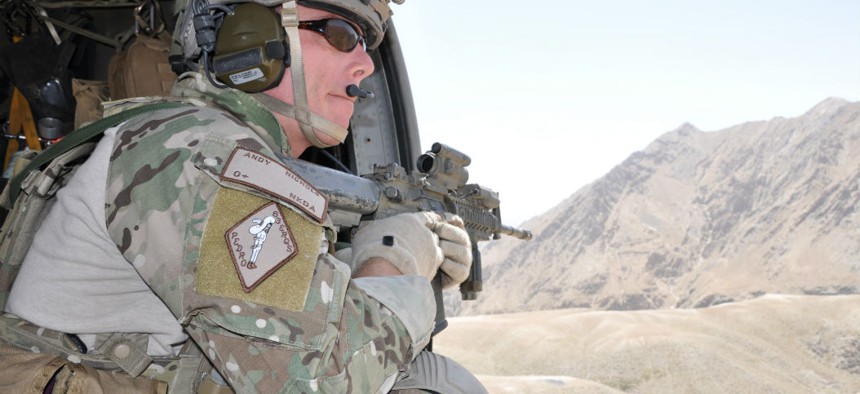Army produces new lightweight tactical vest
The next generation tactical vest is lightweight and scalable, and may be deployed as early as next year.
Whether a mission requires soft, concealable body armor or ballistic plates and pelvic protection, the Army’s new Modular Scalable Vest (MSV) has got soldiers covered. After its final field tests last month with the 71st Ordnance Group and 10th Chemical Hazardous Response Company, the MSV proved to be lighter and more versatile than its predecessors.
Specifically, the MSV is 26 percent lighter than the previous Improved Outer Tactical Vest (IOTV), according to the Army Acquisition Support Center. Weighing only 11 pounds on its own and about 25 pounds when equipped with ballistic plates, the MSV reduces a soldier’s overall load by about five pounds, said an Army spokesperson.
“It’s a huge improvement over previous body armors…compared to my IOTV, [the MSV] is lighter and cooler, has a greater range of motion, and a better fit,” said 1st Lt. Dawn Ward, a Platoon Leader with the 663rd Ordnance Company.
According to an Army press release, one way developers reduced the weight of the MSV was by replacing the pouch attachment ladder system. Instead of the reinforced nylon strips on the vest that soldiers would use to weave and snap their gear into place, the MSV has rubber-like material with laser-cut slots.
“I currently wear the IOTV about twice each day and it is quite a bit heavier than this body armor,” said Spc. Isaac Bocanegra, an Explosive Ordnance Disposal Technician with the 764th OD CO. “Having this new body armor would make my job so much easier.”
The MSV is not only lighter than the existing tactical vest, but it also is much more versatile. According to Stephen McNair, Test Manager for Project Manager Soldier Protection Individual Equipment at PEO Soldier, the vest can be scaled up or down depending on the mission requirements.
This versatility is possible because the MSV can be worn in four different configurations. The first configuration consists of just the basic soft armor, and is beneficial when a soldier needs lightweight, concealable armor that allows for a wide range of motion.
The second configuration is the soft armor with protective plates inserted. According to McNair, the third configuration includes the soft armor, and this time ballistic plates. Finally, the last configuration is the soft armor and ballistic plates worn with PEO Soldier’s ballistic combat shirt, which includes neck, shoulder, and pelvic protection. This configuration is also worn with a belt system that allows soldiers to attach some gear to their hips that usually weighs on their torsos.
McNair reports that the leaders of a unit will be in charge of determining which configuration is appropriate for each mission.
The second, often overlooked aspect of versatility is sizing. The MSV comes in more sizes that the IOTV did, meaning that soldiers can find the fit that gives them the best range of motion and coverage, according to the press release.
“I have an extra-small because it positions the plates where I need them to be and it has a tighter fit for me,” said Spc. Hannah Carver-Frey, a chemical, biological, radiological, nuclear specialist with 10th Chemical Hazardous Response Company.
According to the Army, the MSV will begin full rate production after completing this final round of field testing last month and will be distributed from 2018 to 2021. However, soldiers deploying to combat zones may receive the MSV as early as next year.




